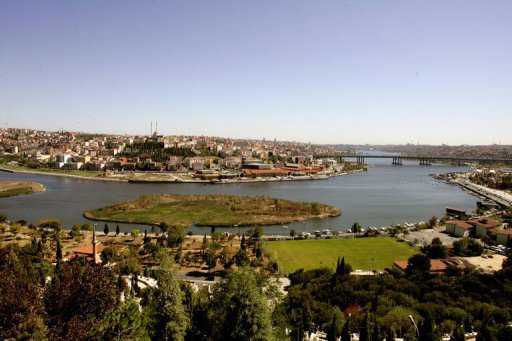August 23, 2012 by Mira Oberman

A general view of Istanbul
Enlarge
A general view of Istanbul. Could the word for mother prove that Turkey was the birthplace of hundreds of languages as diverse as Hindi, Russian, Dutch, Albanian, Italian and English? A study used a massive database of common words—or cognates—both modern and ancient to trace the roots all the way back to Turkey.
Could the word for mother prove that Turkey was the birthplace of hundreds of languages as diverse as Hindi, Russian, Dutch, Albanian, Italian and English?
Researchers using a complex computer model originally designed to map epidemics have traced the evolution of the Indo-European language family to find an answer in a study published Tuesday in the journal Science.
Similarities between hundreds of languages spoken from Iceland to India have led to hot debates over where they originated and what their spread and evolution can tell us about early humans.
The dominant theory is that the languages now spoken by some three billion people came from Bronze Age nomads who used horses and the wheel to spread east and west from the steppes north of the Caspian sea near what is now Ukraine around 5,000 to 6,000 years ago.
Others argue that it was agriculture—not the horse—that helped spread the language. They trace the origins to Turkey around 8,000 to 9,500 years ago.
This latest study used a massive database of common words—or cognates—both modern and ancient to trace the roots all the way back to Turkey.
“This is one of the key cases put forward for agriculture being an important force in shaping global linguistic diversity,” said lead author Quentin Atkinson, an evolutionary psychologist at the University of Auckland in New Zealand.
The results build on archeological and genetic research which has suggested that early human migration helped spur the spread of agriculture, Atkinson said.
“It wasn’t just that all the hunter gathers were in Europe and looked over the fence and saw their neighbors were cultivating and started doing it themselves. There was a real movement of people,” he said.
“The languages suggest this is a movement of culture as well—the hunter gathers weren’t just picking up a plough, they were also adopting culture and the language.”
Using methods originally designed by epidemiologists to trace the language makes sense because the similarities between the evolution of living creatures and living languages has long been understood, Atkinson said.
“Darwin talks about it in the Origins of the Species and The Descent of Man, ‘these curious parallels,’ he calls them.”
Biologists tracing the roots of a global pandemic will take samples in multiple locations, sequence the DNA and map how the virus has evolved through time by looking at how its genes have been modified.
“Once they’ve got the family tree… they can trace back along the branches of the tree all the way back to the origin,” Atkinson said in a telephone interview.
“What we did was apply the same kind of approach to languages.”
The team built a database of cognates such as mother, which is moeder in Dutch, madre in Spanish, mat in Russian, mitera in Greek and mam in Hindi.
They then set about building a family tree for the languages which would capture them in space and time and account for the gains or losses of cognates.
“This is a major breakthrough,” archeologist Colin Renfrew of the University of Cambridge in the United Kingdom said in an accompanying article in Science.
Not everyone was convinced.
“There is so much about this paper that is arbitrary,” Victor Mair, a Chinese language expert at the University of Pennsylvania, told Science.
The Atkinson model relies on logical leaps about the rates of language change and how languages diffuse, Mair said, while the steppe hypothesis “is based heavily on archeological data such as burial patterns, which are directly tied to datable materials.”
(c) 2012 AFP